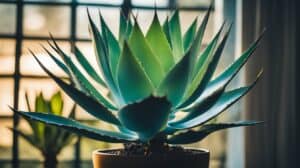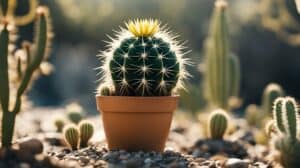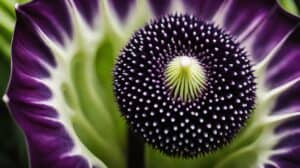Cimicifuga Racemosa, commonly known as Black Cohosh, is a perennial plant native to North America.
This plant is widely used for medicinal purposes, especially for women’s health.
Cimicifuga Racemosa is known for its dark and mysterious beauty, making it a popular choice for landscaping as well.
In this article, we will explore some essential care tips for Cimicifuga Racemosa.
Cimicifuga Racemosa is a low-maintenance plant that can thrive in various growing conditions.
However, proper care is essential for the plant to reach its full potential.
From soil requirements to pruning techniques, this article will cover everything you need to know to keep your Cimicifuga Racemosa healthy and beautiful.
So, whether you are a seasoned gardener or a beginner, these care tips will help you embrace the dark beauty of this fascinating plant.
Understanding Cimicifuga Racemosa
Botanical Profile
Cimicifuga racemosa, also known as black cohosh, is a perennial plant that belongs to the buttercup family.
It is native to North America and can grow up to 8 feet tall.
The plant has a tall, slender stem with large, compound leaves that are divided into smaller leaflets.
The flowers of cimicifuga racemosa are small and white and bloom in long, slender spikes.
Common Names and Varieties
Cimicifuga racemosa is commonly known as black cohosh, black snakeroot, and fairy candle. There are several varieties of cimicifuga racemosa, including:
- Atropurpurea: This variety has purple leaves and stems and produces pinkish-white flowers.
- Hillside Black Beauty: This variety has dark purple leaves and stems and produces white flowers.
- Brunette: This variety has dark purple leaves and stems and produces pinkish-white flowers.
Black cohosh has been used for centuries for its medicinal properties, particularly for women’s health issues.
It is often used to relieve symptoms of menopause, such as hot flashes, mood swings, and sleep disturbances.
The plant contains several compounds, including triterpene glycosides and isoflavones, which are believed to have estrogen-like effects on the body.
Overall, cimicifuga racemosa is a beautiful and useful plant that can add interest to any garden while providing health benefits to those who use it.
Cultivation Essentials

Ideal Soil Composition
Cimicifuga Racemosa, commonly known as Black Cohosh, prefers a well-draining soil that is rich in organic matter.
A pH range of 5.5 to 7.0 is ideal for its growth. The soil should be kept moist, but not waterlogged, to ensure optimal growth.
It is recommended to add compost or aged manure to the soil before planting to improve its texture and nutrient content.
Lighting Requirements
Black Cohosh prefers partial shade to full shade, making it an ideal choice for gardens with limited sunlight.
It can tolerate some morning sun, but it should be protected from harsh afternoon sun.
If grown indoors, it should be placed near a north-facing window or under fluorescent lights.
Watering Regimen
Black Cohosh requires regular watering to maintain its growth. The soil should be kept moist, but not waterlogged, to prevent root rot.
It is recommended to water deeply once a week, rather than shallowly every day, to encourage deep root growth.
During hot and dry weather, it may require more frequent watering.
Temperature and Humidity Preferences
Black Cohosh prefers cool and moist environments, making it an ideal choice for gardens in USDA zones 3 to 8.
It can tolerate temperatures as low as -40°F (-40°C) and as high as 90°F (32°C).
It prefers high humidity levels, so it may require frequent misting if grown indoors or in dry climates.
By following these cultivation essentials, you can ensure that your Black Cohosh plant thrives and produces beautiful dark blooms.
Maintenance and Care

Fertilization Strategies
Cimicifuga Racemosa is a low-maintenance plant, but it still requires proper fertilization to thrive.
It is recommended to fertilize the plant once a year during the spring season.
Use a balanced fertilizer with equal amounts of nitrogen, phosphorus, and potassium.
Follow the instructions on the fertilizer package for the correct amount to apply.
Over-fertilization can cause the plant to grow too quickly, resulting in weaker stems and leaves.
Pruning and Trimming
Pruning and trimming are essential to keep Cimicifuga Racemosa healthy and looking its best.
The best time to prune the plant is during the early spring season before new growth appears.
Cut back any dead or damaged stems and remove any old or yellow leaves. This will help stimulate new growth and encourage a fuller, bushier plant.
Pest and Disease Management
Cimicifuga Racemosa is relatively pest and disease-free, but it is still susceptible to certain issues.
Keep an eye out for common pests like aphids and spider mites, which can be treated with insecticidal soap or neem oil.
Avoid overwatering the plant, as this can lead to root rot and other fungal diseases.
If you notice any signs of disease, such as yellowing leaves or black spots, remove the affected leaves and treat the plant with a fungicide.
Overall, Cimicifuga Racemosa is a beautiful and low-maintenance plant that can add a touch of dark beauty to any garden.
With proper fertilization, pruning, and pest management, this plant can thrive for years to come.
Propagation Techniques

Cimicifuga racemosa, commonly known as black cohosh, can be propagated through seeds, division, and cuttings.
Each propagation technique has its own advantages and disadvantages, and it is important to choose the one that suits your needs.
Seeds
Propagation through seeds is the easiest and most affordable method.
The seeds should be sown in the fall or early winter, and they will germinate in the spring.
The seeds should be sown in a well-draining soil mix, and kept moist until germination.
It is important to note that black cohosh seeds have a low germination rate, so it is recommended to sow a large number of seeds to increase the chances of success.
Division
Propagation through division is the most reliable method, as it ensures that the new plant will have the same characteristics as the parent plant.
The best time to divide black cohosh is in the spring, just as new growth is starting to emerge.
The plant should be dug up and divided into smaller sections, each with its own roots and shoots.
These sections should be replanted immediately in a well-draining soil mix.
Cuttings
Propagation through cuttings is the quickest method, as it produces new plants in just a few weeks.
The cuttings should be taken in the spring or early summer, when the plant is actively growing.
The cuttings should be about 4-6 inches long, and taken from the tips of the stems.
The leaves on the lower half of the cutting should be removed, and the cutting should be dipped in rooting hormone before being planted in a well-draining soil mix.
The cutting should be kept moist and in a warm, bright location until it has rooted.
In conclusion, black cohosh can be propagated through seeds, division, and cuttings.
Each method has its own advantages and disadvantages, and it is important to choose the one that suits your needs.
Seeds are the easiest and most affordable method, division ensures that the new plant will have the same characteristics as the parent plant, and cuttings produce new plants in just a few weeks.
Frequently Asked Questions

What are the ideal growing conditions for Actaea varieties?
Actaea varieties, including Cimicifuga racemosa, prefer to grow in partially shaded areas with well-draining soil.
They can tolerate full sun in cooler climates, but in hot regions, they need protection from the sun.
They also require consistent moisture, so make sure to water them regularly.
How often should I water Cimicifuga racemosa plants?
Cimicifuga racemosa plants require consistent moisture, so it’s important to water them regularly.
However, they don’t like to sit in water, so make sure the soil is well-draining.
It’s best to water them deeply once a week rather than giving them frequent shallow watering.
What are the best soil requirements for growing ‘Hillside Black Beauty’?
‘Hillside Black Beauty’ prefers moist, well-draining soil that is rich in organic matter.
It can tolerate a range of soil pH levels, but a slightly acidic soil with a pH of 5.5 to 6.5 is ideal.
When and how should I prune my ‘Black Negligee’ bugbane?
‘Black Negligee’ bugbane should be pruned in late fall or early spring before new growth appears.
Cut back the stems to about 6 inches above the ground. This will help stimulate new growth and keep the plant from becoming too leggy.
Can you provide tips for successfully transplanting Actaea ‘Chocoholic’?
Actaea ‘Chocoholic’ can be transplanted in the spring or fall. Make sure to choose a new location with similar growing conditions to the old one.
Dig a hole that is slightly larger than the root ball and plant the Actaea at the same depth it was previously growing.
Water it well and keep the soil consistently moist until the plant becomes established.
What are the common pests to watch out for when caring for Actaea ‘Pink Spike’?
Actaea ‘Pink Spike’ is relatively pest-free, but it can be susceptible to aphids, spider mites, and mealybugs.
Keep an eye out for these pests and treat them promptly if you notice an infestation. Insecticidal soap or neem oil can be effective treatments.














